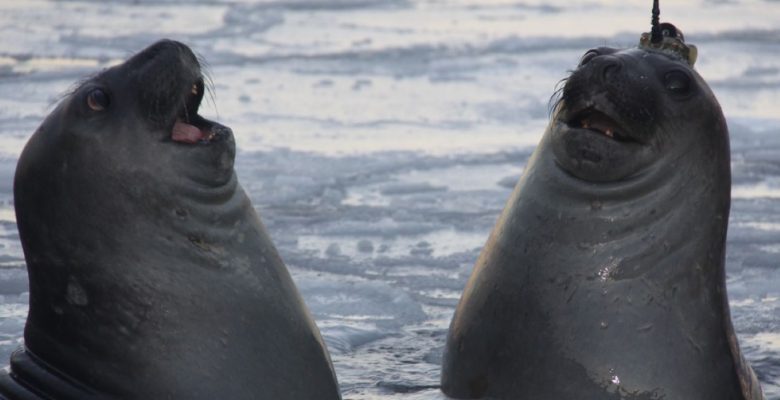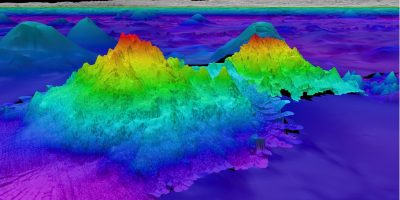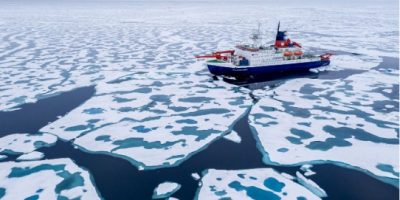By Laurie Henry
The Animal Borne Ocean Sensors (AniBOS) network, launched in 2020, represents an innovative technique for observing the oceans and is already recognized as an essential component of the global ocean monitoring and data collection network.
The oceans are an essential part of the global climate system. A thorough understanding of the physics of the oceans and how they evolve is essential to understanding the Earth’s climate. Global efforts to coordinate ocean observations are overseen by the Global Ocean Observing System (GOOS).
But the world’s oceans are vast, and observation from all regions, for all ocean processes of interest, is beyond the capacity of a single observing network, underscoring the need for a multi-pronged approach. Indeed, there are areas that are difficult to access and for which data is lacking.
A complementary project
Filling these gaps is crucial, especially in the high latitude Southern and Arctic Oceans which are currently changing rapidly due to climate change.
It is in this context that the AniBOS network fits. Its objective is to collect oceanographic measurements from the most inaccessible regions of the world’s seas. These are in particular high latitudes, shallow coastal shelves and tropical seas. These shortcomings are largely due to logistical costs, limited satellite coverage, and limited seasonal vessel access to remote ice-covered regions.
The program also aims to coordinate the long-term collection of marine data streams and make them accessible to everyone and free of charge. In doing so, it provides complementary capability to other GOOS networks that monitor critical ocean, climate and biodiversity variables.
Animals are the best placed to observe the oceans
Since marine animals travel many miles to find food, scientists have begun to equip these animals with special devices and sensors to better understand their feeding behavior and collect oceanographic data over long distances and in different locations.
These ocean sensors can be placed on different animals, such as elephant seals, Wedell seals and turtles. Once the animal is captured and secured, the device is fixed with epoxy, so as not to disturb the movements and behavior of the animal. Then he is released. Data is transmitted in near real time using the Advanced Research and Global Observation Satellite (Argos) system.
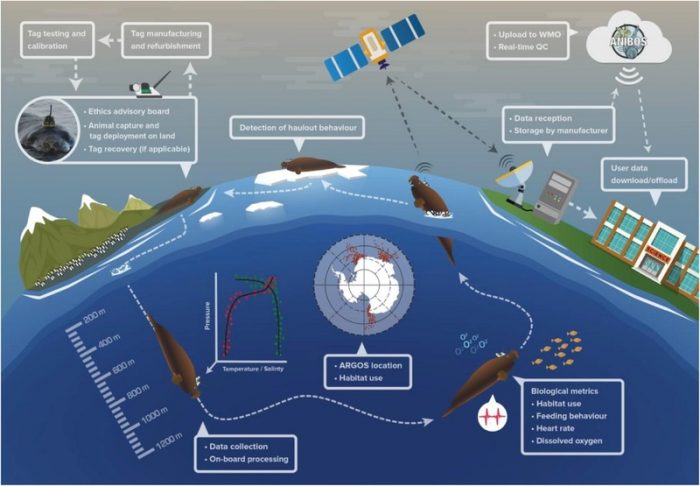
Schematic overview of the procedures followed to collect oceanographic data using marine animals (shown here with a southern elephant seal). © McMahon et al., 2021
The type of data collected depends on the species and life history characteristics of the animal. Penguins provide comprehensive temperature profiles of the Southern Ocean, from 0 to 2000 meters depth. Penguins and fur seals in temperate regions of the southern hemisphere record temperature data primarily in the upper 100 meters of the water column. Seabirds make surface measurements such as ocean currents and winds over large areas of tropical and temperate oceans. However, the types of instruments that seabirds can carry are limited due to their size and the weight they can support in flight.
Dr Clive McMahon of IMOS and the Sydney Institute of Marine Science, who initiated the project, explains: “Equipping marine animals with biological and physical sensors is a long-established approach to studying animal behavior, their ecology and physical environment, and has produced rich streams of data for several decades”.
Animal-worn sensors thus help fill the gap by collecting and transmitting an average of 500 temperature-salinity-depth profiles per animal per year, increasing observations in the upper ocean. They greatly improve the accuracy and confidence in estimates of the state of the oceans.
It is from these data, consolidated and robust, that studies of climate variability are based. They establish a basis for refining estimates of climate predictions at regional and global scales.
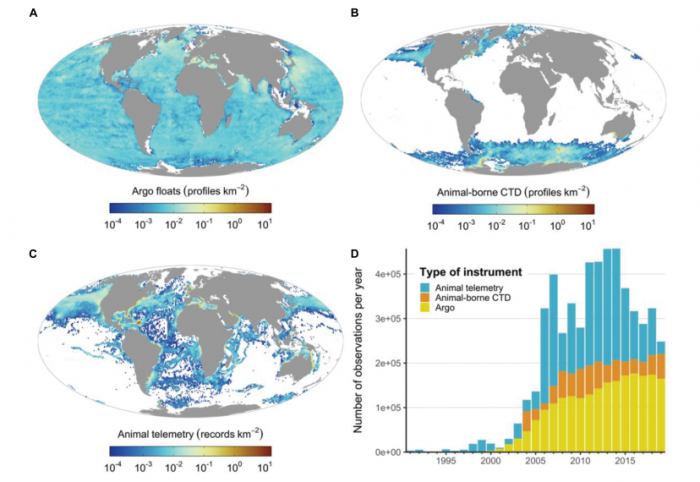
Spatial and temporal distribution of the Argo network (A) and observations from animal-worn sensors (B and C). In (D), annual number of observations generated by each type of instrument. © McMahon et al., 2022.
Understand the impact of global warming on marine animals
In addition to climate predictions, these observations are also a wealth of data on animal movements and behavior.
The fusion of oceanography and marine mammal ecology advances understanding of the world’s oceans and their top predators. It makes it possible to predict how these species will be affected by future climate change.
Ultimately, this knowledge is essential for developing evidence-based policy to protect animals and their habitats from anthropogenic pressures.
AniBOS approved by all
AniBOS was officially recognized in 2020 as a GOOS network. Moreover, in October 2021, it was approved as a project forming part of the United Nations Decade of Ocean Science for Sustainable Development 2021-2030.
Dr. Michelle Heupel, Director of IMOS points out: “This IMOS-led initiative will ensure that data from animal tracking efforts will be used more widely in ocean observation, and ultimately integrated into oceanographic models, making animal tracking data more relevant to global ocean observing efforts”.
